Tervell [he/him]
- 1.94K Posts
- 146 Comments

 4·5 months ago
4·5 months agoreject rails, embrace having your scope mounted so high you can’t even get a cheek weld
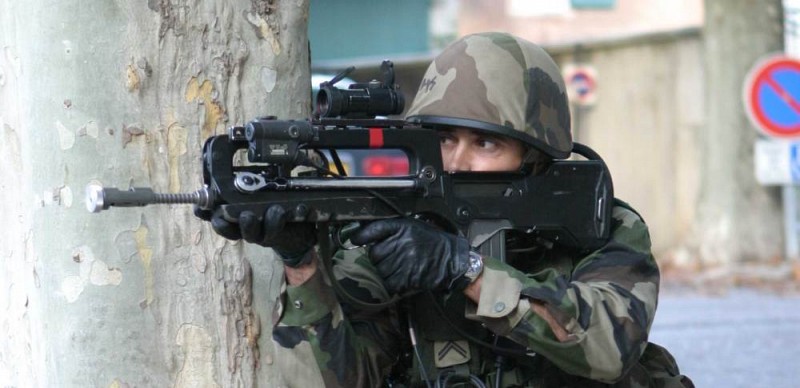

 2·5 months ago
2·5 months agoYeah, the beginning can be pretty difficult, the problem is that you’re mostly resigned to slowly crawling behind guys and bonking them with the baton or prod (unless you exploit the jank to your advantage) - later on, when you’ve accumulated some guns, leveled a weapon skill up to Advanced, and installed some augmentations you’ll be a lot more flexible, both in stealth and in combat. Liberty Island can also be quite overwhelming as a first level, they really expect you to have played the separate tutorial level first.
You could also look into mods - normally I’d suggest staying vanilla for a first playthrough, but if you’ve already bounced off it a few times it might be worthwhile to try.

 2·5 months ago
2·5 months agoHow far in did you get? It’s definitely a rather janky game, but if you can put up with it there’s a lot to love (although it’s also surprisingly long, so it might overstay its welcome in some ways too). I feel like it gets smoother once you’re past the first few chapters and have a few augs and leveled-up skills to work with.

 36·5 months ago
36·5 months agoMIC ghouls are somehow not satisfied with the massive amount of money they’re getting (archived)
No more ‘must-wins’: Defense firms growing warier of fixed-price deals
WASHINGTON — Lockheed Martin chief executive Jim Taiclet offered a warning during a quarterly earnings call this week, The government, he said, is putting too much risk on defense companies by flexing its muscle as the sole buyer of military hardware, and his firm is changing its approach. “We don’t have any must-win programs with Lockheed Martin anymore,” Taiclet said.
I, uh… what? Ah yes, the US government, famed for flexing its muscle against the private sector! Okay, I’m linking the damn nuclear missiles article post again, but it’s just such a good example of the actual reality that it’s the private sector flexing its muscles as sole supplier, rather than the other way around:
On 14 December 2019, it was announced that Northrop Grumman had won the competition to build the future ICBM. Northrop won by default, as their bid was at the time the only bid left to be considered for the GBSD program (Boeing had dropped out of the bidding contest earlier in 2019). The US Air Force said: “The Air Force will proceed with an aggressive and effective sole-source negotiation.” in reference to Northrop’s bid.
anyways, back to the new article
Taiclet was one of several defense industry executives who this week aired their angst about the government’s contracting practices. Many were particularly concerned about fixed-price contracts. Under these agreements, meant to secure the least risk for taxpayers, companies pick up the bill when costs run higher than expected. Such cases can be disastrous for defense firms — like Boeing’s $7 billion in overruns on a $4.9 billion contract for the KC-46, an Air Force tanker. Taiclet argued that, as the defense industry’s only customer in most cases, the Pentagon has enough sway to make its suppliers accept its terms.
Oh no, not the poor little multibillion dollar megacorporation! Maybe they should just… fail and go out of business, isn’t that what the free market’s all about? They should have just been a better company and not allowed costs to overrun, or analyzed the market better and gotten a more accurate estimate of the costs.
In an earlier interview with Defense News, though, acting deputy for industrial base policy Halimah Najieb-Locke said the department is reconsidering how often it uses fixed-price contracts, especially when it comes to companies that also work in the commercial market. … Despite the intent to save taxpayer money, she said, these contracts don’t account for changes in the market. Sometimes it makes sense for the Pentagon to pay more when that investment keeps a supplier in the market or to secure a supply chain, she said.
Here’s a secret little trick - if the government simply owns the arms manufacturing capabilities itself, it doesn’t have to worry about the companies that supply it going out of business or switching to serving a different market during a downturn in demand, and then not being able to buy all the shit it needs once a war starts approaching. By using the forbidden black magic spell called “economic planning”, it can simply keep that industry around, even if it isn’t strictly profitable, because it’s obviously incredibly strategically important and shouldn’t be left to the whims of the free market!
“So now we’re reverting to best value” contracting standards, which take into account more than just price, she said. … Lockheed wasn’t the only company this week signaling a change in how it approaches fixed-price contracts — and warning of exiting competitions if the conditions aren’t right. Northrop Grumman too said it has changed its approach to bidding on fixed-price deals where a mature design is not in place since 2015, when it won the contract to build the B-21 Raider stealth bomber. The service used a cost-plus structure for the Raider’s initial development phase, and a fixed-price structure for the low-rate initial production phase that began in the final quarter of 2023. … Northrop Grumman on Thursday announced a nearly $1.6 billion pre-tax charge on the B-21, which included $143 million in cost growth for the Raider’s first LRIP lot.
Besides passing on some fixed-price programs outright, Warden said, Northrop has also come back to the government with its own counter-offers. Sometimes, as in the case of Northrop’s counter-offer to the Space Development Agency on a second tranche of satellites to provide missile warning and tracking capabilities, the government passes, Warden said. “These are things that are going to happen, and we are going to remain disciplined,” Warden said. “We have plenty of opportunity in this company to grow. We have a strong pipeline of opportunities for pursuing, and a strong pipeline of opportunities that we believe have the right risk-reward balance.”
okay, so the government is “flexing its muscle as the sole buyer of military hardware”, and yet companies have “plenty of opportunity to grow” and a “strong pipeline of opportunities for pursuing”, so I guess the flexing isn’t doing much

 39·5 months ago
39·5 months agowhoops, ship machine broke (archived)
when you’re the global hegemon, but you start running out of your capability to actually deploy globally and enforce your hegemony
Ship shortage forces Marines to consider alternate deployments
WASHINGTON — The U.S. Marine Corps is looking more closely at how to leverage alternate ships to keep its forces at sea, amid an amphibious ship shortage a top Marine called the “single biggest existential threat” to the service. Lt. Gen. Karsten Heckl, the deputy commandant for combat development and integration, told Defense News the Navy is seeking to improve amphib ship readiness and on-time maintenance. But with the Pentagon weighing whether to pause future amphibious ship production, he said the Marines are more serious than ever about using other kinds of ships, including the expeditionary sea base and the expeditionary fast transport. He said the expeditionary fast transport, or EPF, has been successfully used by Marines in the Pacific several times recently. It’s not tailor-made for amphibious missions, he noted in the Jan. 12 interview, but “we’re just going to have to make do.”
I love having to “make do” despite my military budget being over 870 billion!
In the Middle East, Heckl noted, the Bataan Amphibious Ready Group with the 26th Marine Expeditionary Unit remains on station off Israel. But it’s been deployed since July and eventually must come home. When it does, there is no ready ARG on the East Coast to replace it. … As a result, in recent and upcoming deployments, the Marines are going to sea through nontraditional means. From September through December, the Marines moved the 11th MEU command element from the West Coast into the Pacific. … Because these Marines didn’t have the full Marine expeditionary unit capability onboard a full three-ship amphibious ready group, they had to rely on external aviation assets to get to and around the theater. But, Brodie said in a Jan. 19 interview, it allowed the Marine Corps to have a deterrent force at sea ahead of Taiwan’s Jan. 13 election, considered a period of heightened risk with China. In another example, Brodie said, the Boxer ARG on the West Coast will deploy with the 15th MEU in phases. Due to ship maintenance challenges, all three ships are not ready to deploy as planned; instead, the Somerset will leave in the coming days, with Boxer and Harpers Ferry departing California in the March timeframe. This allows the Marines to have some forces at sea now, even if the full ARG is not ready to go just yet.
Brodie said the Marines are seeking to ensure three MEUs are ready for operations at any given time, even if there isn’t an accompanying ARG available. “We’re working to do the best that we can do to get forces on a sea base; in the absence of that, we’re looking at other ways to have Marines forward for a fleet commander,” he said. Gen. Christopher Mahoney, the assistant commandant, said Jan. 25 during a Hudson Institute event that having three MEUs at sea on three fully ready ARGs is unlikely today. “What we will have is MEUs that are trained and ready,” he said. If there’s an urgent need to deploy them, “they may be conveyed by alternate means, they may be conveyed by the air. Not optimal, and not what they were designed to do.” … Brodie said putting Marines to sea on alternate ships is “feasible” but “not desired” because the expeditionary sea bases and expeditionary fast transports, while spacious, do not have all the aviation support, ammunition storage and other features of an amphibious ship.

 29·5 months ago
29·5 months agosources say
would these be the same sources that talked about the water-filled missiles? anyway
“Basically, China says: ‘If our interests are harmed in any way, it will impact our business with Tehran. So tell the Houthis to show restraint’,” said one Iranian official briefed on the talks, who spoke to Reuters on condition of anonymity.
Well, good thing Ansar Allah aren’t doing that, and Chinese (and Russian) ships specifically seem to be going through just fine. Also, I think the rate of attacks was actually already slowing down anyway (since the effort was actually successful and deterred ships trading with Israel). If anything, Chinese interests might be served, rather than harmed, if this leads to shipping contracts being shifted from Western companies to Chinese ones.
The Chinese officials, however, did not make any specific comments or threats about how Beijing’s trading relationship with Iran could be affected if its interests were damaged by Houthi attacks, the four Iranian sources said.
So they didn’t say shit, “pressing” someone generally requires, you know, some kind of pressure. The title of the article is “China presses Iran”, but the text of it is “China tells Iran that the current situation is fine, let’s just make sure to keep it that way”
Houthi spokesman Mohammed Abdulsalam said on Thursday that Iran to date had not conveyed any message from China about scaling back attacks.

 19·5 months ago
19·5 months agoyeah, when I first read the title I was really confused about when the hell did Nvidia get into the missile business

 53·5 months ago
53·5 months agowhoops, missile machine broke (archived)
RTX Slow to Deliver Missiles to Defend US Carriers From China
RTX Corp. has fallen behind schedule delivering the Navy’s top air defense missile that’s meant to counter China’s “aircraft carrier killer” weapons, prompting a key House defense spending committee to block the Pentagon’s request for another $3.2 billion contract. RTX has delivered about half of the 625 Standard Missile-6 missiles required under a five-year, $1 billion contract from 2019, according to the Defense Contract Management Agency. This year, the Pentagon wants to buy another 825 of the missiles in a five-year deal from RTX, which changed its name from Raytheon Technologies in 2023.
The agency said supply-chain delays that began during the Covid-19 pandemic haven’t been fully resolved. “The extent to which those delays and cost impacts were fully within Raytheon’s control is not entirely clear,” DCMA said in a statement to Blomberg News. There have been delays of motors manufactured by Aerojet Rocketdyne and issues with third-tier suppliers all with unique challenges that new owner L3Harris Inc. is working to correct.
The SM-6 Block I/IA model is seen capable of intercepting China’s DF-21D missile, which is designed to attack US aircraft carriers, according to a US defense official who asked not to be identified discussing non-public information. RTX in a statement said its “in direct and frequent dialogue with Pentagon officials as well as congressional defense oversight committees to mitigate the delivery impact caused in large part by delays in solid rocket motor manufacturing.” The company is working with the Pentagon and Navy to find alternate sources for the motors, it said. Still, Rep. Ken Calvert, the California Republican who chairs the House defense appropriations committee, remains unconvinced. His panel has so far declined to approve the Pentagon’s next SM—6 procurement request, although the Senate panel has done so. The entire defense appropriations bill remains stalled on Capitol Hill.
“I believe there’s value in multi-year procurement when it’s appropriate, which is why the fiscal 2024 bill authorizes most of the other multi-year contracts requested,” he said in a statement. “But everything we approve has to be justified and scrutinized, and the fact is the performance on the previous multi-year contract for the SM-6 gives us concern” because it’s behind schedule, he said. L3Harris said that in the five months since closing on its Aerojet acquisition “we have continued investing in facility expansions and more efficient manufacturing processes, which have already led to increases in capacity for some key programs.”
The Navy’s top readiness official, Fleet Forces Command head Admiral Daryl Caudle, surprised attendees last January at a surface warfare symposium when he scolded the industry on lax delivery performance. “I need SM-6 delivered on time. I need MK-48 torpedoes delivered on time,” he said. Asked for an update, Caudle’s office said the SM-6 has marginally improved deliveries though it’s “not back to the required schedule.” The statement said the Navy and the Pentagon have “taken significant steps over the past year in support of this effort.”
you know, maybe if you want your military equipment delivered on time, you shouldn’t be reliant on the private sector for literally everything? critical support to the American capitalist class in their anti-imperialist struggle against their own country’s military


 3·5 months ago
3·5 months agoyeah, it’s a type of brigandine, honestly one of the coolest types of armor out there (and possibly the origin of “studded leather” in fantasy RPGs, from people seeing pictures of just the outside and not realizing the studs are actually rivets holding metal plates in place on the inside)


 1·5 months ago
1·5 months agoYeah, might just be something for the photo-op but they probably could have managed to get some kind of cheap red dot. I have some examples of Vals with red dots & scopes (and those don’t even use a pic rail, the Val already has a side rail like the SVD and some AKs for this purpose), plus the modernized ASM Val comes with a receiver top rail
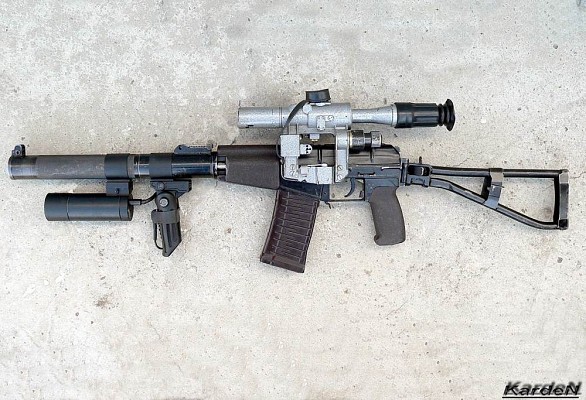
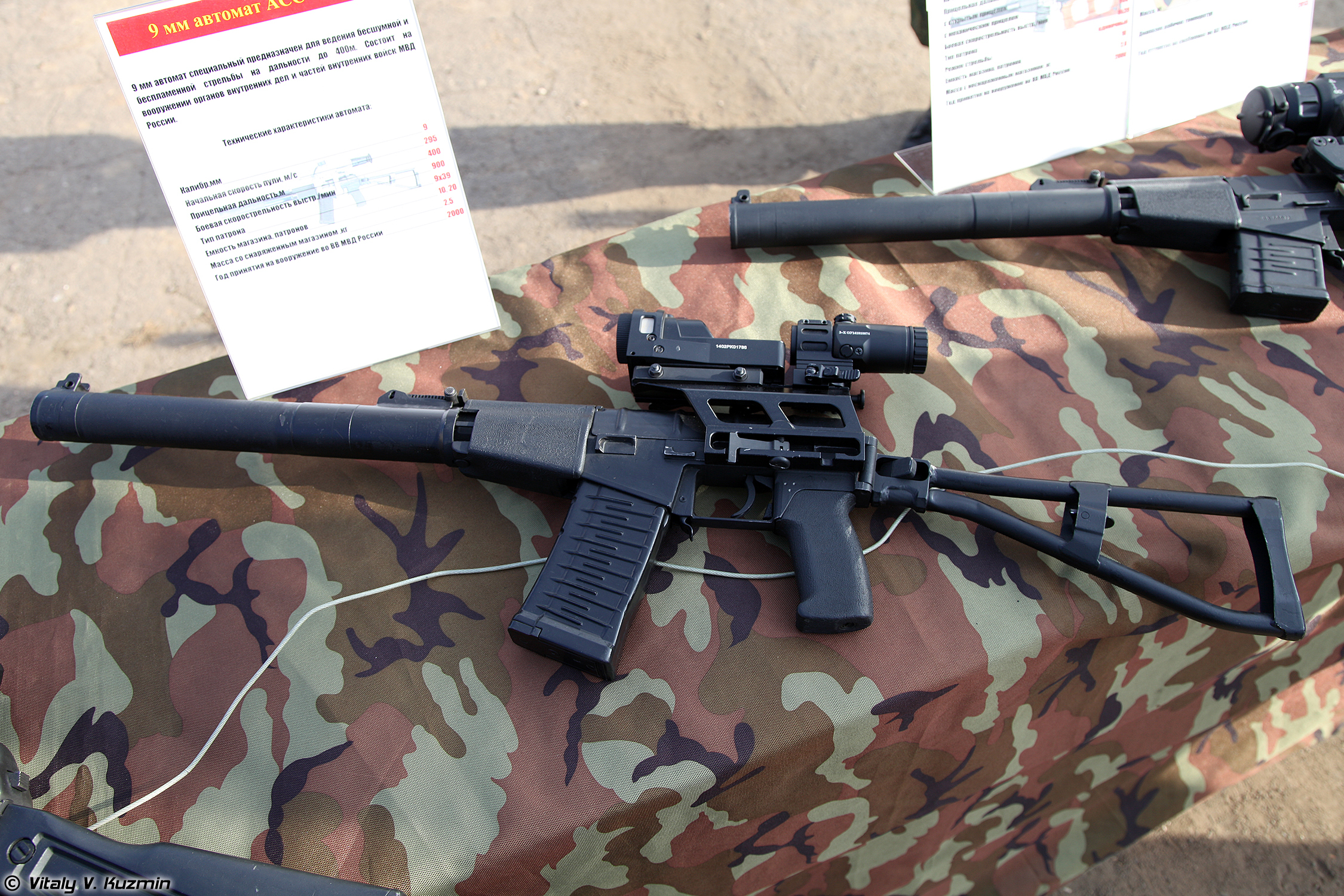

In this specific scenario, a magnified scope probably isn’t the best idea since this setup is meant for very close-quarters fighting, like breaching into buildings (hence the shield). But a red dot would still be useful.
gripping an AK by the magazine a bad idea
I feel like rifles with an AK-style magazine mechanism are actually one of the types where you can most get away with holding them that way, the lockup is really solid. Holding it like that here probably has something to do with the shield - you can see that the AS Val guy’s hand is almost bumping up against the shield guy’s shoulder, holding it by the foregrip just wouldn’t work out here. And he needs to be basically hugging the shield guy in order to most effectively take cover behind him - see here, where the second guy is so close he can’t even grip the magazine, let alone the foregrip
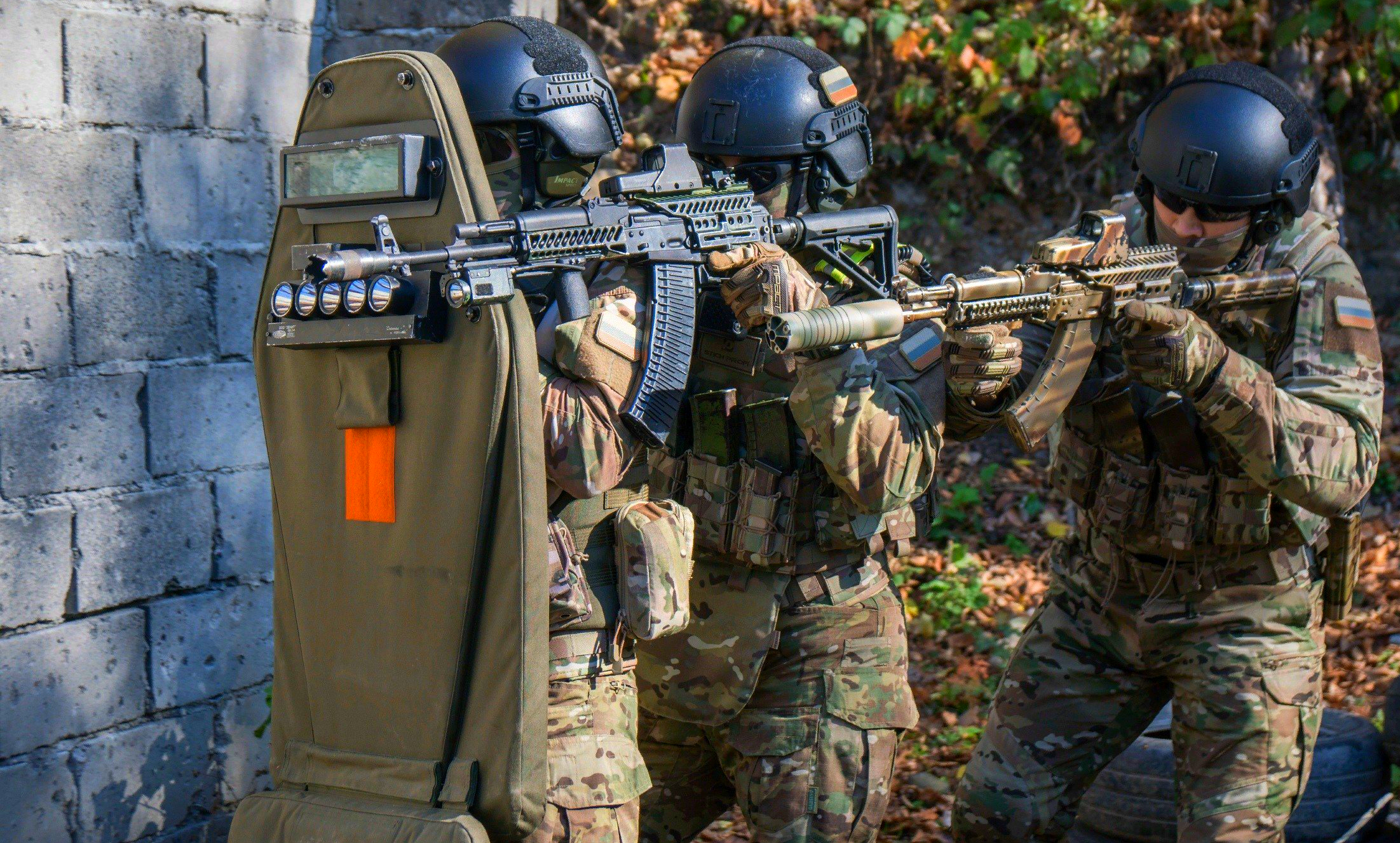
Isn’t his thumb right where the magazine release sits
I think in this grip you just rest your thumb along the side, rather than fully wrapping around:


 2·5 months ago
2·5 months agothe rear sight is actually attached to the suppressor itself (and the front sight too), it’s kind of weird and jank but the Val isn’t meant to be used without the suppressor attached, and the Russians tended to prefer putting their rear sights further forward on most guns until recently (although this is still way further forward than the AK)

yep, it’s amazing

 33·5 months ago
33·5 months agobut it could just be more grift
yeah, certainly possible. The previous article had this great bit:
The US Air Force said: “The Air Force will proceed with an aggressive and effective sole-source negotiation.” in reference to Northrop’s bid
I guess their “aggressive and effective negotiation” was to, uh, just give them even more money? Aggressively emptying my wallet to the guy mugging me.

 48·5 months ago
48·5 months agoabsolutely hilarious (in a
 sort of way) followup to my previous post about American ICBMs, holy shit (archived)
sort of way) followup to my previous post about American ICBMs, holy shit (archived)Sentinel ICBM incurs ‘critical’ cost breach, at risk of cancellation without SECDEF certification
The Minuteman III replacement’s costs ballooned by 37 percent and will take about two years longer than expected as officials reportedly discover hidden complications of silo construction.
WASHINGTON — The Air Force’s replacement for its nuclear-tipped Minuteman III ballistic missile fleet has suffered a “critical” cost breach and could be delayed by as much as two years, a service spokesperson confirmed to Breaking Defense, a setback for the program that officials have long warned could run into trouble.
The service notified Congress Thursday that LGM-35A Sentinel “has exceeded its initial cost projections,” the spokesperson said, prompting what’s known as a Nunn-McCurdy breach. According to the spokesperson, the Sentinel program’s 2020 baseline program acquisition unit cost of $118 million per missile — the sum of development, construction and procurement — increased by “at least 37 percent” to approximately $162 million in 2020 dollars, prompting a “critical” breach that requires Defense Secretary Lloyd Austin to certify the program to stave off its cancellation.
The $96 billion Sentinel program is now estimated at about $131.5 billion in current dollars, Bloomberg reported, a hefty sum driven by unforeseen complications with silo and launch center construction. The program’s current objective for initial operational capability (IOC) is June 2029, which the Air Force spokesperson said could be delayed by as much as two years as a result of the issues.
A top modernization effort for the Defense Department, the Sentinel program’s issues have already drawn congressional scrutiny. And with strong backing from lawmakers, it seems unlikely the program will be terminated. “Sentinel is absolutely necessary for the future of our nuclear deterrent. I’m committed to conducting vigorous oversight of the program and ensuring the Air Force follows through on making the necessary changes to address the cost overruns while continuing to advance the program,” House Armed Services Committee Chairman Mike Rogers, R-Ala., said in a statement today. “The Department must ensure that Sentinel is ready in time to replace the current ICBMs before they reach the end of their lives. Failure is not an option,” he added.
Northrop Grumman, which won the Sentinel contract in 2020, has struggled with supply chain woes, workforce shortages and clearance issues, the Government Accountability Office warned in June 2023. Officials recently have also been vexed by the program’s challenges, with Air Force Secretary Frank Kendall lamenting its “unknown unknowns.”
also to reiterate this bit from the previous post:
On 14 December 2019, it was announced that Northrop Grumman had won the competition to build the future ICBM. Northrop won by default, as their bid was at the time the only bid left to be considered for the GBSD program (Boeing had dropped out of the bidding contest earlier in 2019).
So there isn’t a backup plan here - the only company that can do this is struggling to do it. There was a discussion earlier in the thread about whether the US could restart its war machine, and, uh… maybe they straight up can’t? Like, we’re not talking about tanks or artillery shells here, these are ICBMs, a key element of nuclear deterrence, something considered necessary even in peacetime (at least by the ghouls in charge). I guess the Americans better hope the 14 nuclear ballistic subs they have still work… or adopt Jim Hacker thought

 9·5 months ago
9·5 months agoyeah, Total Recall’s got some great guns, although I’m not sure if they were going exactly for the G11 here (that’s kind of blockier and chonkier, it’s like a rectangle with a scope and grip sticking out of the top and bottom, having a normal magazine kind of breaks the silhouette, but I guess there are a lot of limitation when working with existing props). The G11 was indeed featured in a lot of media as a “this is what we’ll be using in the future” gun, although it was more so video games since getting real G11s for a live-action production isn’t really an option. It, and the OICW too.
Total Recall has these awesome Pancor Jackhammer mock-ups as well:
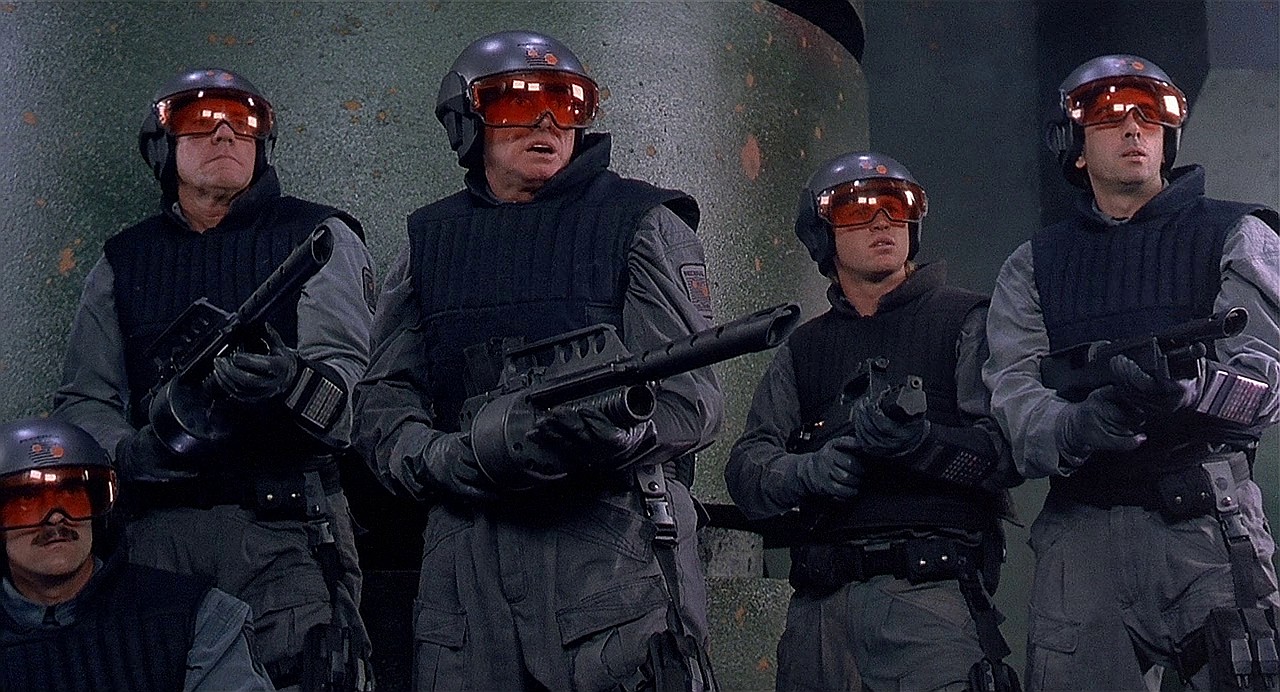
older action movies in general often have a really great selection of guns, I much prefer it to all the tacticool shit of today. Like, did you know that the Half-Life MP5 with grenade launcher was actually a real thing (well, movie prop, from End of Days), they were on some wild shit:


 93·5 months ago
93·5 months agoI just got back from Ukraine, where I was visiting some friends. Everything we have heard about what’s happening in Ukraine is a lie. The reality is darker, bleaker, and unequivocally hopeless. There is no such thing as Ukraine “winning” this war.
- By their estimates, they have lost over one million of their sons, fathers and husbands; an entire generation is gone.
Nazis and destroying the demographics of their own people, name a better duo
- Even in the Southwest, where the anti-Russian sentiment is long-standing, citizens are reluctant or straight-up scared to publicly criticize Zelensky; they will go to jail.
- In every village and town, the streets, shops, and restaurants are mostly absent of men.
- The few men who remain are terrified of leaving their homes for fear of being kidnapped into conscription. Some have resorted to begging friends to break their legs to avoid service.
- Army search parties take place early in the morning, when men leave their homes to go to work. They ambush and kidnap them off the streets and within 3-4 hours they get listed in the army and taken away straight to the front lines with minimal or no training at all; it is “a death sentence.”
- It’s getting worse every day. Where I was staying, a dentist had just been taken by security forces on his way to work, leaving behind two small children. Every day, 3-5 dead bodies keep arriving from the front lines.
- Mothers and wives fight tooth and nail with the armed forces, beg and plead not to have their men taken away. They try bribing, which sometimes works, but most of the time they are met with physical violence and death threats.
- The territory celebrated as having been “won back” from Russia has been reduced to rubble and is uninhabitable. Regardless, there is no one left to live there and displaced families will likely never return.
- They see the way the war has been reported, at home and abroad. It’s a “joke” and “propaganda.” They say: “Look around: is this winning?”.
- Worse, some have been hoaxed into believing that once Ukrainians forces are exhausted, American soldiers will come in to replace them and “win the war”.
There is no ambiguity in these people. The war was for nothing - a travesty. The outcome always was, and is, clear. The people are hopeless, utterly destroyed, and living in an unending nightmare. They are pleading for an end, any end - most likely the same “peace” that could have been achieved two years ago. In their minds, they have already lost, for their sons, fathers and husbands are gone, and their country has been destroyed. There is no “victory” that can change that.
Except the peace offer then (see under the The Objectives and Strategy of Russia section) was incredibly favorable for Ukraine (and naive on Russia’s part), basically just security guarantees and no NATO membership, without any territorial changes. That ain’t happening anymore.
Make no mistake, they are angry with Putin. But they are also angry with Zelensky and the West. They have lost everything, worst of all, hope and faith, and cannot comprehend why Zelenky wishes to continue the current trajectory, the one of human devastation. I didn’t witness the war; but what I saw was absolutely heart-breaking. Shame on the people, regardless of their intentions, who have supported this war. And shame on the media for continuing to lie about it.

also lmao at the fucking community note

 um actually the US says that only a few Ukrainians have died (based on propaganda fed to them by the Ukrainians)
um actually the US says that only a few Ukrainians have died (based on propaganda fed to them by the Ukrainians)

 3·5 months ago
3·5 months agoyeah, the M60 in particular (seen here alongside a T-62):


 12·5 months ago
12·5 months agoshort not due to a military defeat, but by a financial defeat by sanctions
I think it’s this, combined with believing in GDP as an accurate indicator for economic strength - they really overestimated the effect of sanctions, and underestimated Russian manufacturing capacity (hence the endless “Russia is running out of X” articles, they were supposed to be running out of missiles, of tanks, of artillery shells…). And given the stuff we’re seeing now in the Middle East, such an extreme degree of hubris doesn’t seem all that bold of an assumption.
If Western countries expected this to be a long, attritional conflict, they presumably would have tried to significantly scale up their arms manufacturing, since Ukraine can’t last long without their aid - instead, ammunition prices have increased. Maybe there were some people in NATO who understood this problem, but the modern neoliberal state simply doesn’t seem to be capable of actually addressing it, and can only hope that its wars are short ones.

 2·5 months ago
2·5 months agoMaybe given as military aid to Austria after the war? Or it was just acquired by the museum at some point to fill out their WW2 section, the British Tank Museum has plenty of Soviet vehicles in their collection for example.



















The Finns actually did, and the Belgians and Swiss sort of did it too - the FNC & SG-550, while not exactly AKs, use the same long-stroke operating system and a similar two-lug rotating bolt (although the SG-550 is built to a significantly higher standard than the AK, so while the underlying mechanics are similar it doesn’t really fit into the same category of suitability for mass production). The Swedes use an FNC variant as well.
Even the L85 & G36 are really just home production AR-18s (it’s just that the Brits managed to completely fuck up the implementation of what was explicitly designed to be a cheap, simple gun as an alternative to the AR-15, anglo industrial excellence at work). The FAMAS and AUG are probably some of the few actually somewhat original Cold War European rifle designs from after the AK was widely known (the FAL & G3 sort of predate that, since it wasn’t until the 50s that the AK was really seen in large numbers - the Belgians would specifically replace the FAL with the FNC, which as I mentioned is close to an AK mechanically).